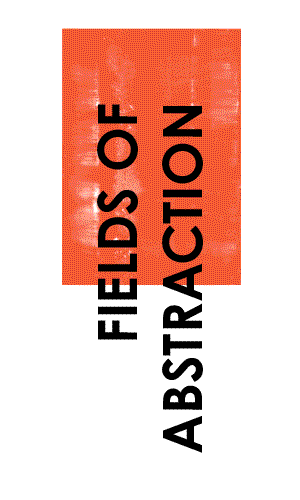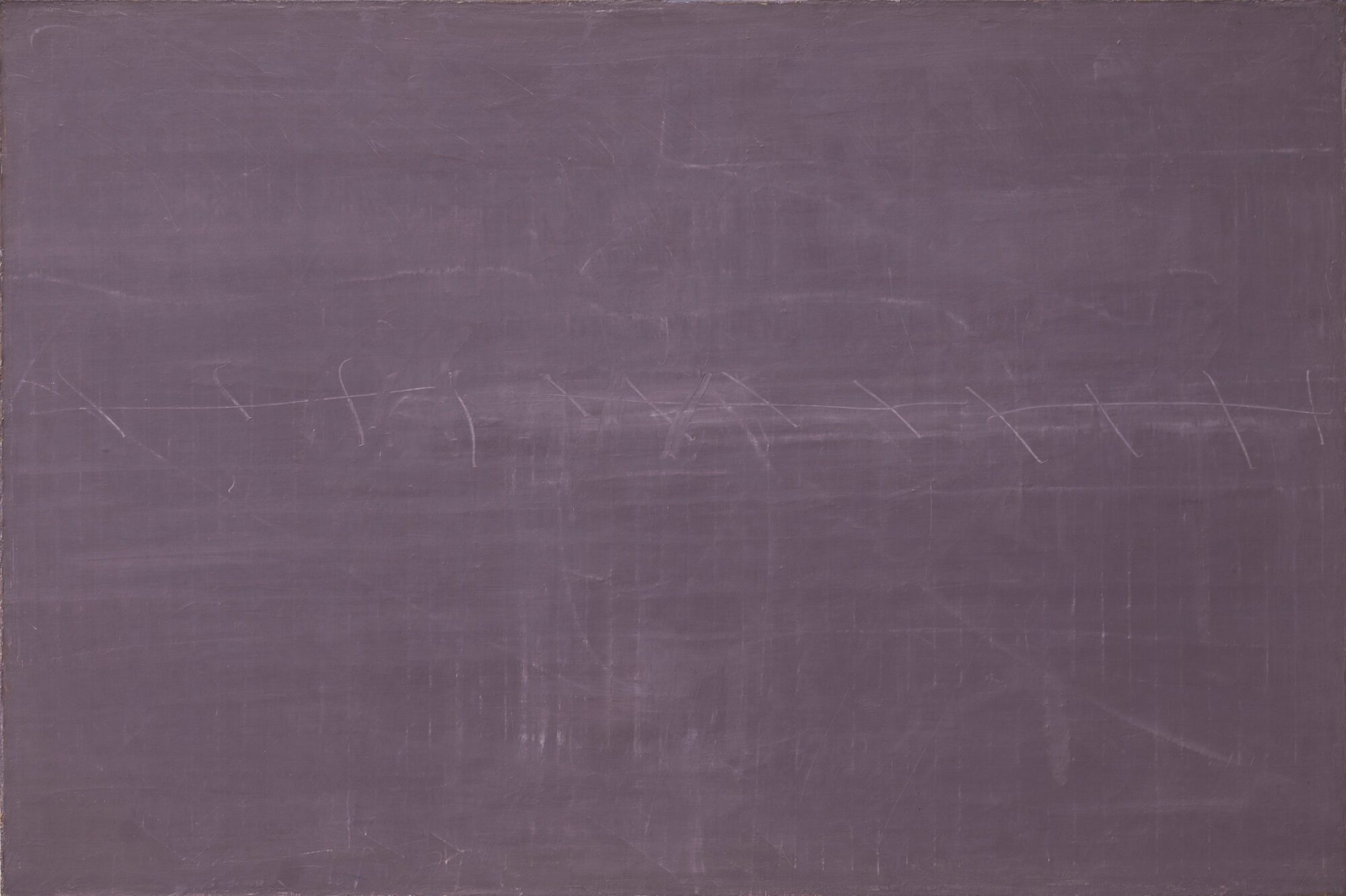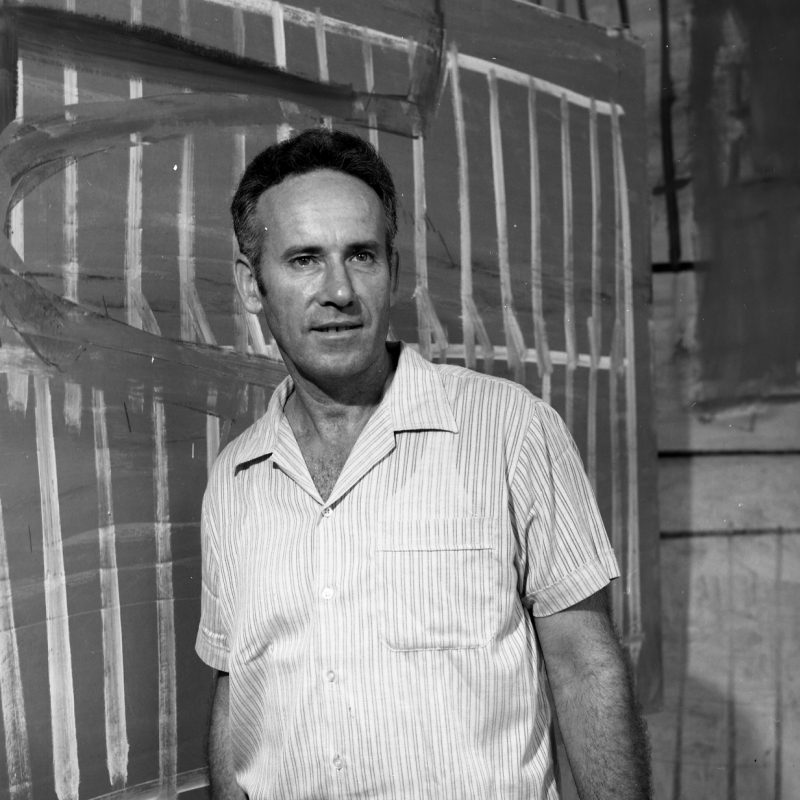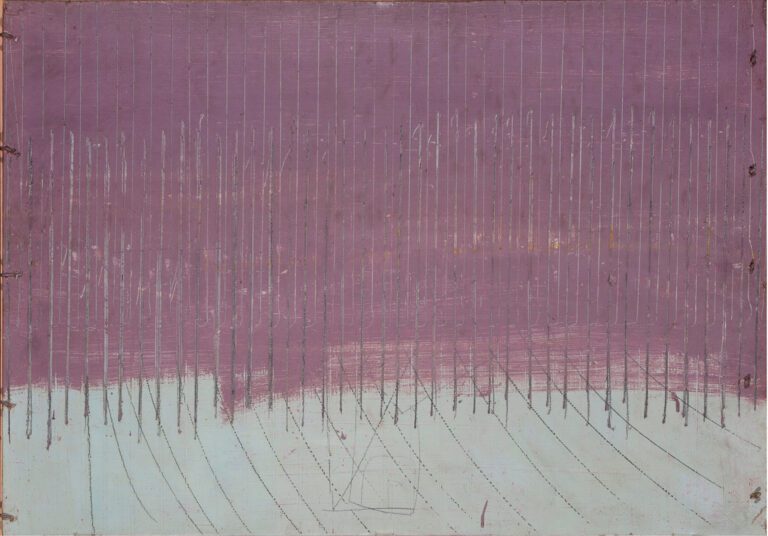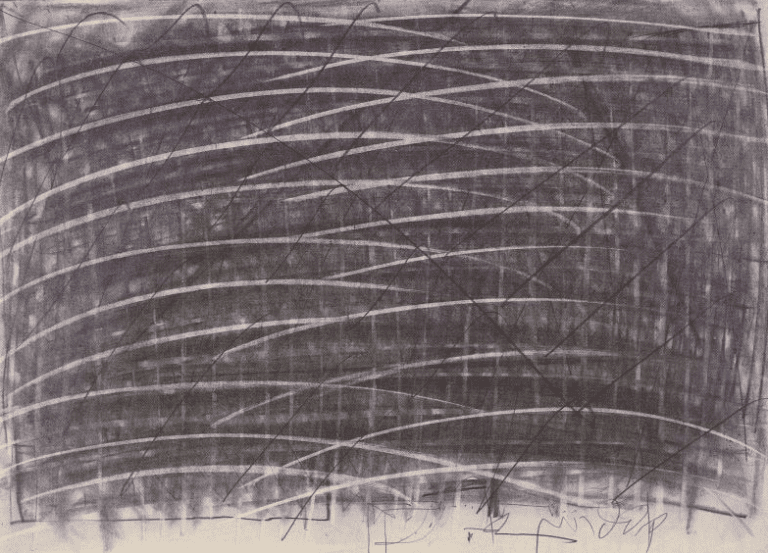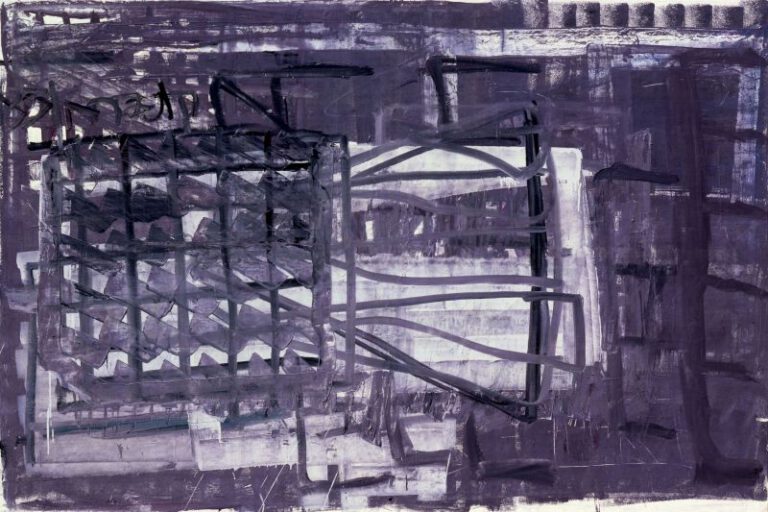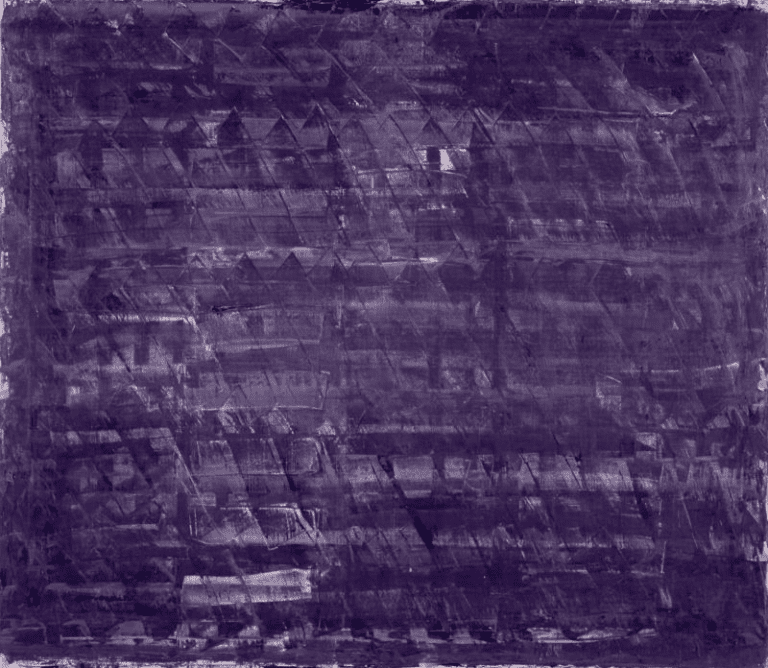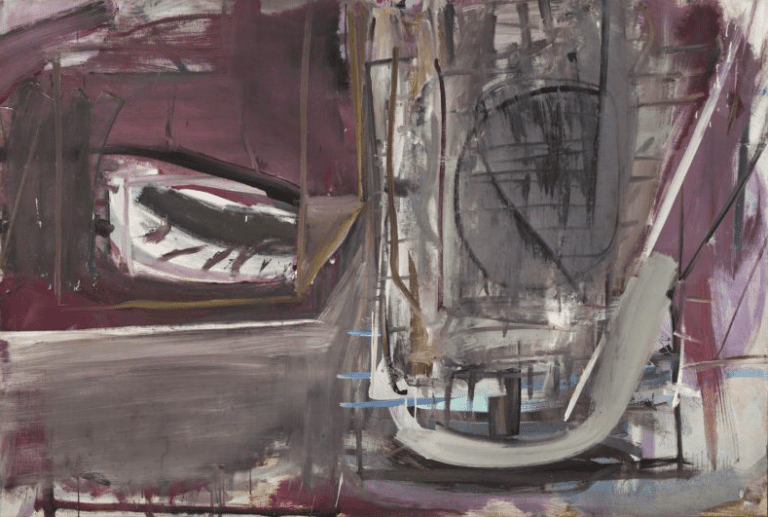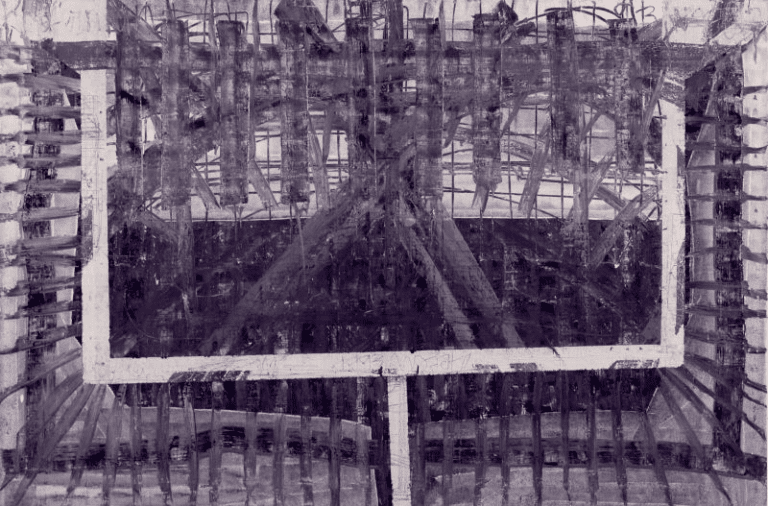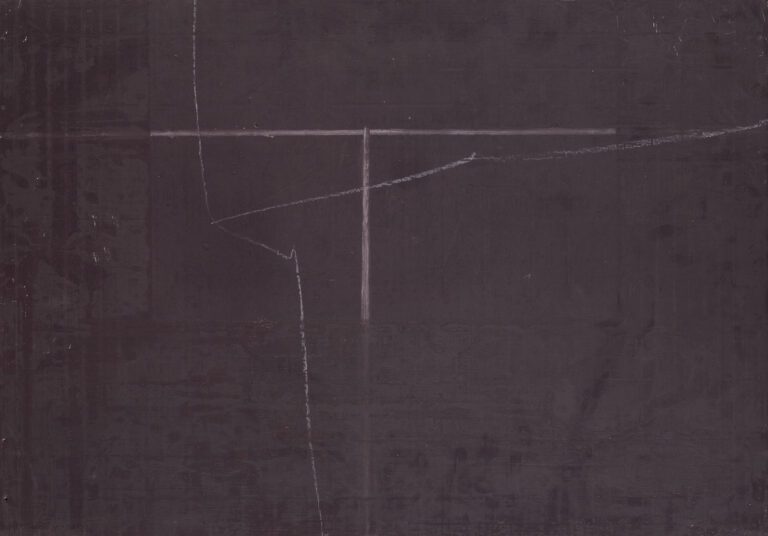The grid lines and purple coloring of Untitled are typical of Moshe Kupferman’s oeuvre. The lines serve as a kind of coordinate system, endowing the painting with a clear structure, which is broken by the deep marks engraved in the canvas. Born in Poland, Kupferman was deported with his family during World War II to camps in the Urals in Kazakhstan and in Germany, surviving on his own through hard physical labor. The artist hinted in the past that the purple color of his works conveys sadness while the horizontal line expresses the existential line of life, which breaks in times of crisis. The lines in the brighter part of this painting are reminiscent of the unary numeral system, with four horizontal lines and a fifth, vertical line that cuts across them. Is this system meant to evoke a countdown chart in jail? And if so, what kind of a jail? Just as the painting’s multiple layers are like a living memory of the past imprisoned in the present, so the unary numeral system may be seen to simulate the sequence of time imprisoned in the static medium of painting.
Replete with personal memories, Kupferman’s works are characterized by his unique layering technique, in which revealing and concealing are both a method and a result – an artistic device and an end-in-itself. Using this strict, concise technique, the artist repeatedly covers parts of the painting and then uncovers them, as in an archaeological dig. Looking at the many layers of paint applied on the canvas and soaked and smeared into it is somewhat like seeing multiple lenses held on top of each other, or watching a kind of breathing, pulsating body. Sometimes the grid motif is clearly evident in the paintings, like the exposed infrastructure of a building, and at other times the artist admits to struggling with lines and shapes that go against his own rigid rules. This conflict between order and chaos, between straight lines and uncontrollable ones, creates a constant tension between logic and planning on the one hand and spontaneity and freedom on the other.
In his early days in Israel, Kupferman studied with Avigdor Stematsky and Yosef Zaritsky, two of the founding fathers of the New Horizons movement, which was at the forefront of abstract painting in Israel in the 1950s and 1960s. While the works of these painters, even at their most abstract, were based on still lifes or landscapes, Kupferman’s abstract images are not confined to any time or place – although they bear indirect traces of the Holocaust, Israel’s wars, and other traumatic events such as Rabin’s assassination.
Noga Goldstein
